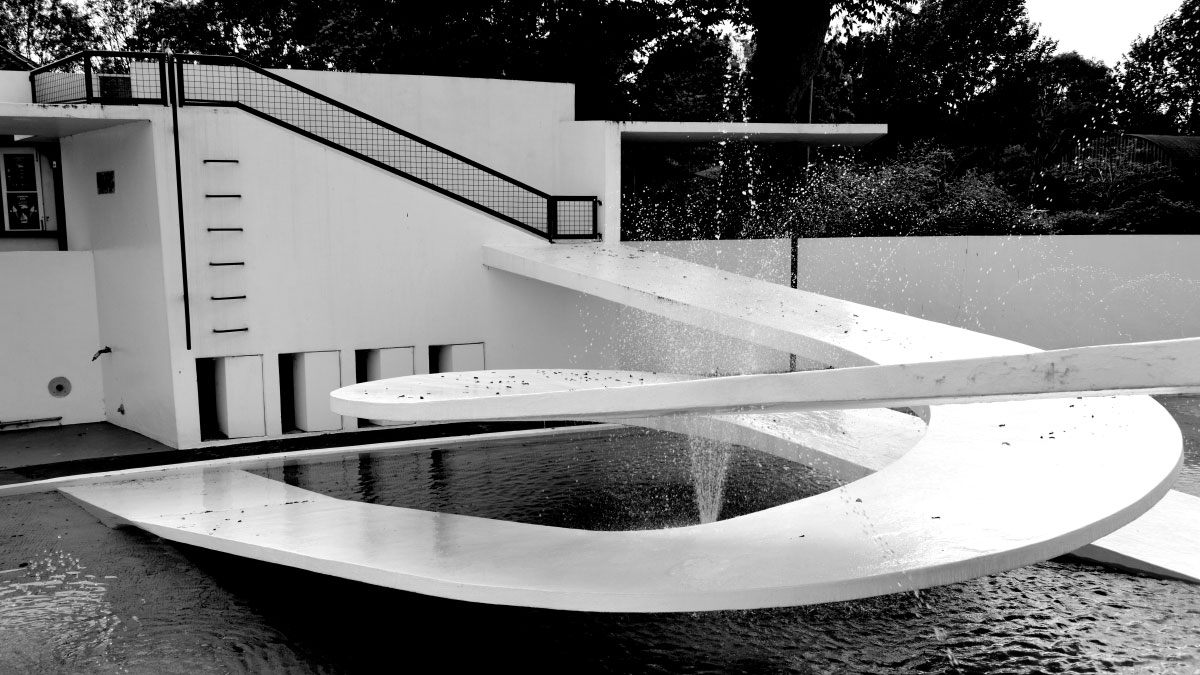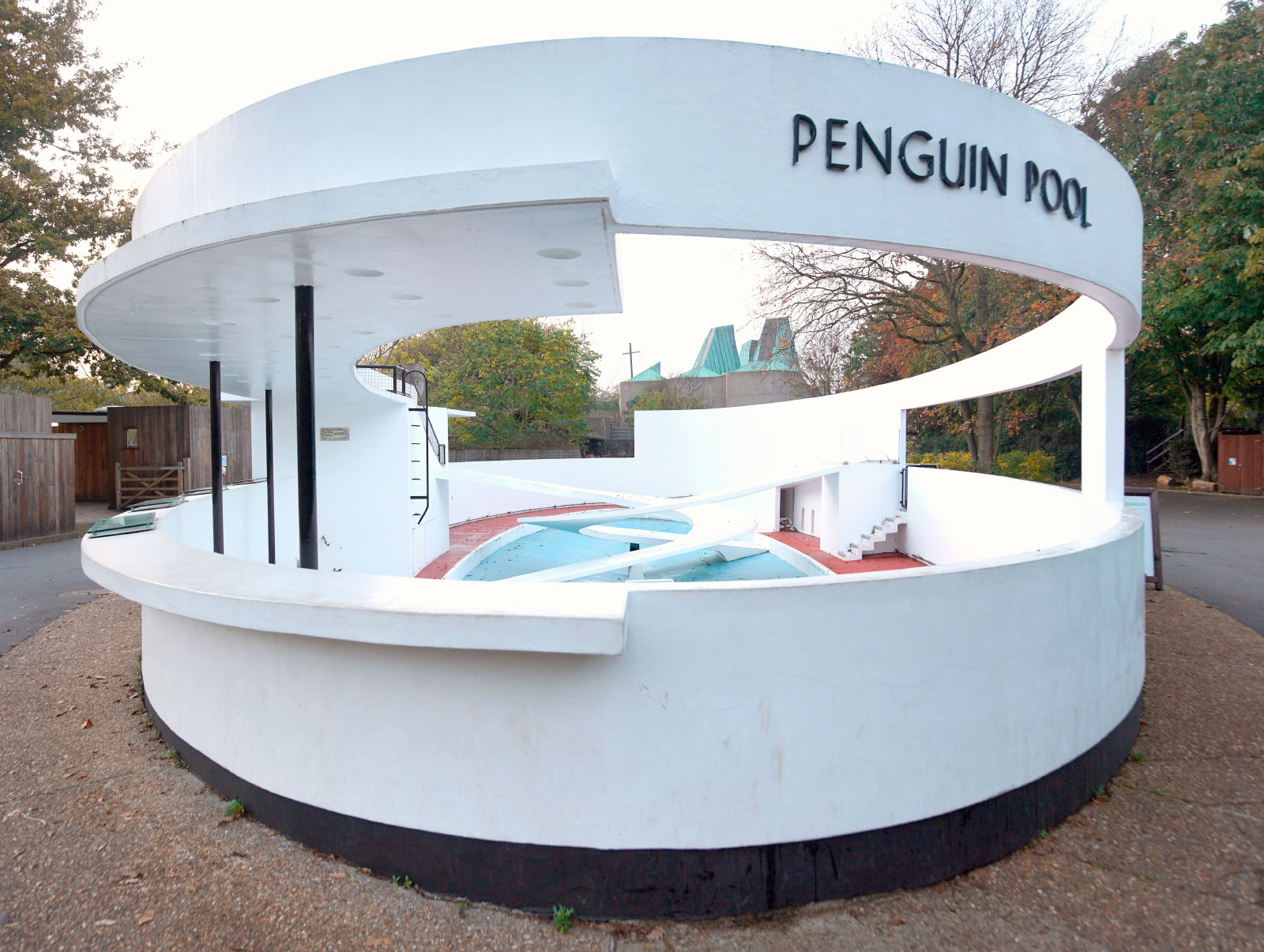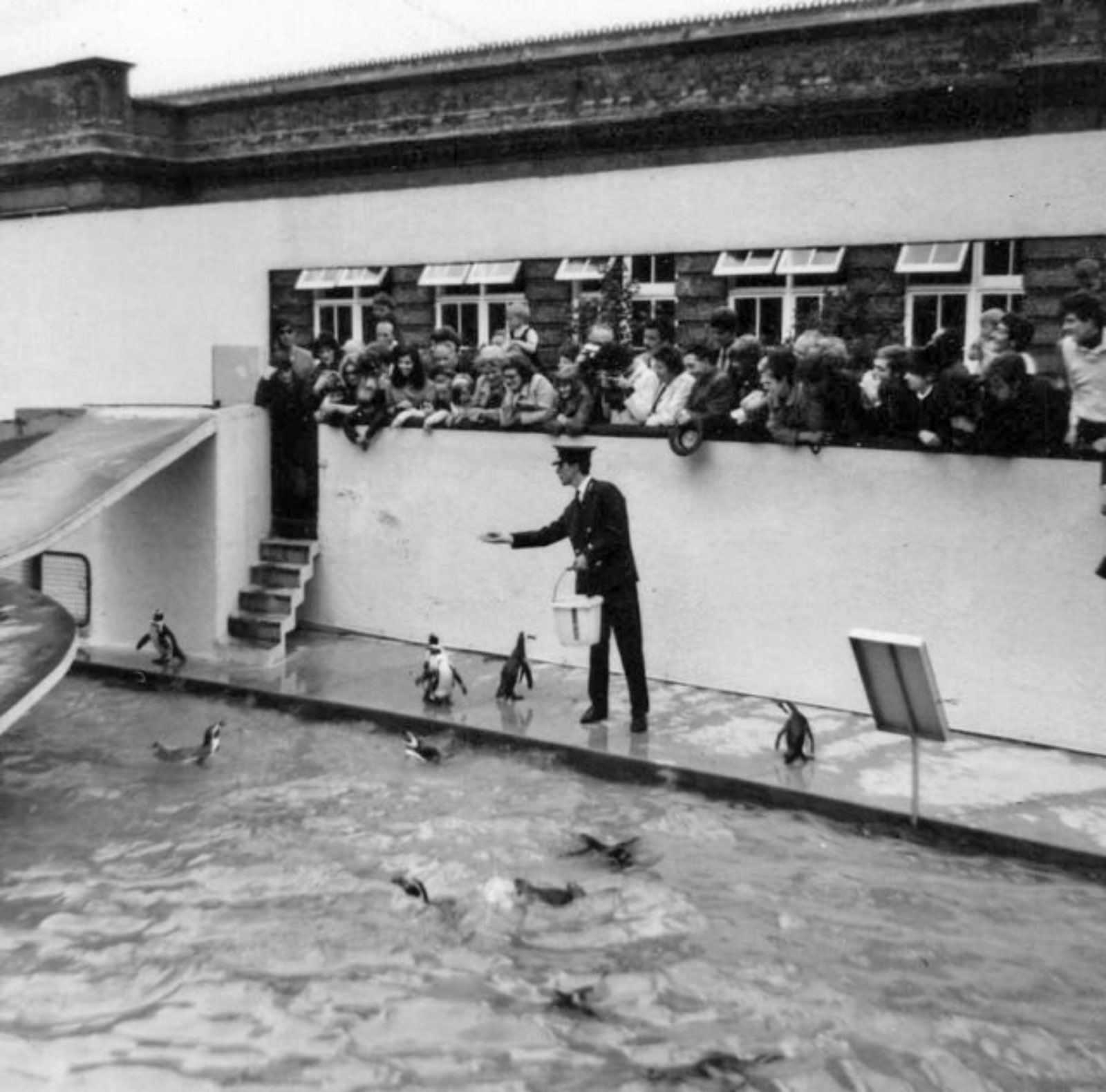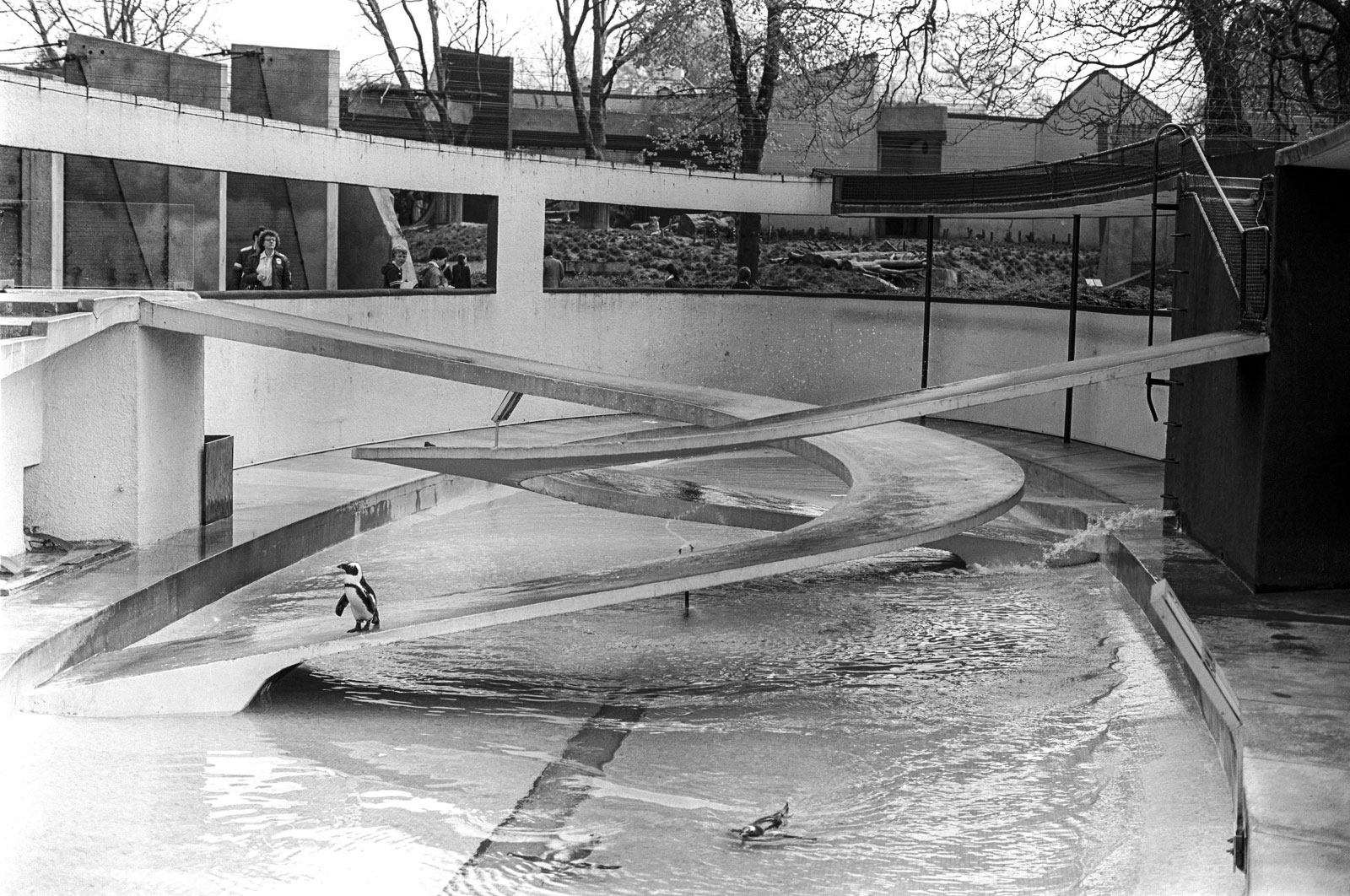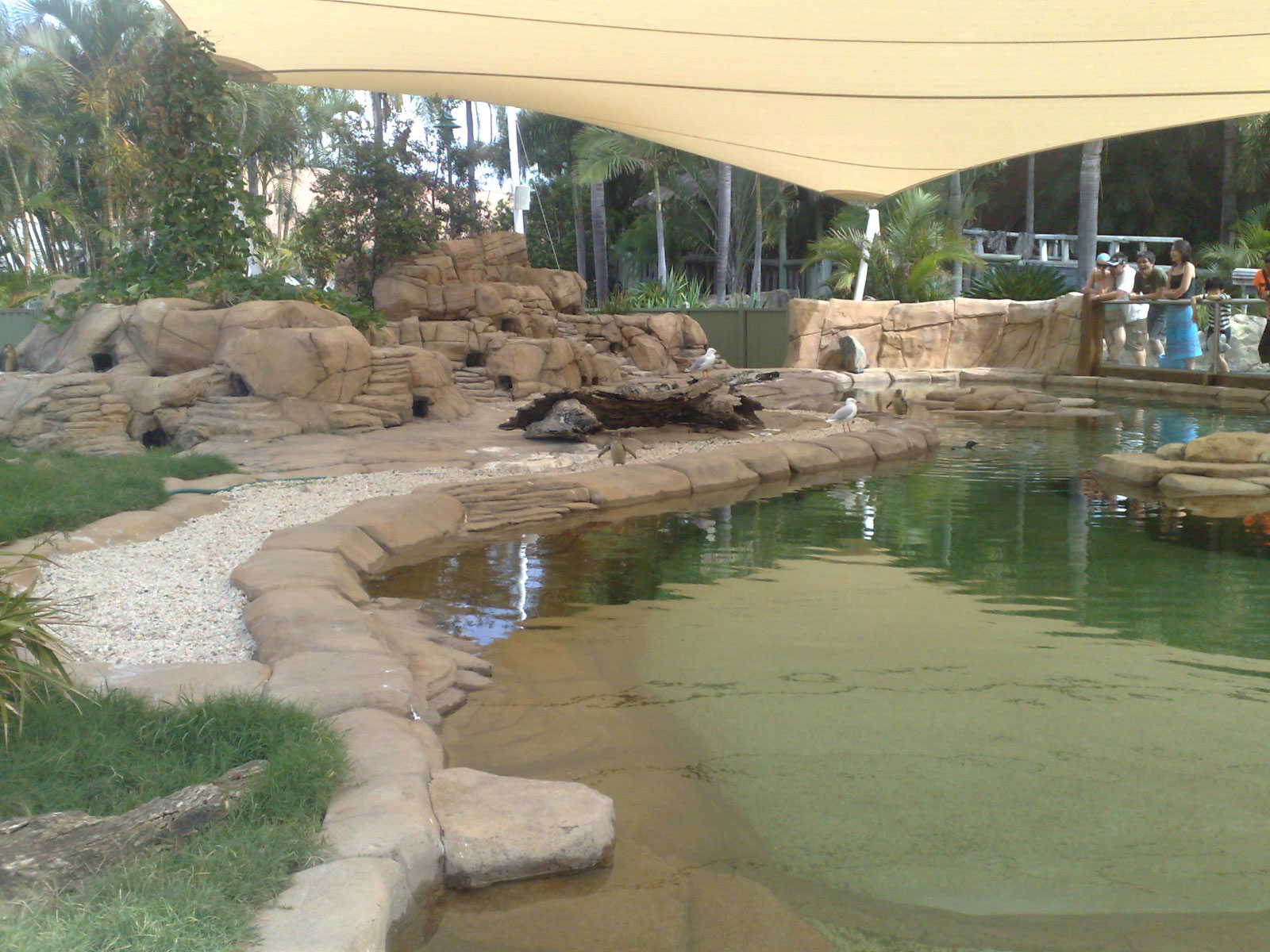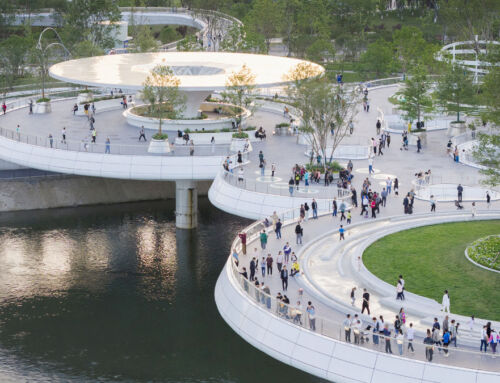In 1934, architect Berthold Lubetkin and his studio Tecton were given a seemingly modest commission to design a penguin enclosure for London Zoo. And so it was, that what might have been a simple swimming pool became a manifesto of the Modern Movement in architecture. The formal experimentation with reinforced concrete in the penguinarium clashed with the real needs of its avian inhabitants.
The design, which Lubetkin realised in collaboration with the engineer Ove Arup, was notable for its technical audacity. The retaining walls, barely 10 cm thick, and the cantilevered ramps extending 14 m, tapering progressively from 15 to 8 cm, demonstrated Lubetkin’s mastery of the structural possibilities of concrete. This apparent lightness contrasted with the solidity required to withstand continuous use and climatic conditions. The elliptical plan layout with interlocking ramps was more an exercise in geometric abstraction inspired by Russian Constructivism, than the replication of a natural habitat.
However, what functioned as an architectural statement was lacking as an animal habitat. The depth of the water was insufficient for the penguins’ swimming solace; the constant exposure to the public caused stress to the birds; and the lack of shelters or shaded areas ignored basic needs of the species. These limitations, added to the structural deterioration of the concrete after decades of use, led to the removal of the penguins in 2004.
The historic value of the penguinarium lies precisely in this duality: avant-garde and functional. Protected as a monument, the penguin enclosure marked a turning point in its approach to London Zoo as an architectural object, but it also highlighted the need to balance formal innovation with animal welfare. The subsequent evolution of zoological habitats, in which the imitation of natural ecosystems coexists with advanced technical solutions, demonstrates that the true avant-garde in this field must satisfy both the eye and its non-human inhabitants.
By Miquel Solís, senior architect in the Architecture Department of Amusement Logic


